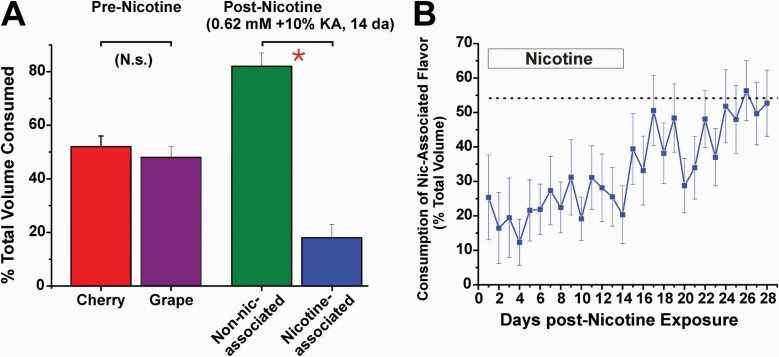Figure 2.
Learned avoidance of nicotine. A. Graph plots mean consumption of the two different Kool-Aid flavors in a two-bottle paradigm, before and after addition of nicotine to one of the bottles. Prior to nicotine, rats consumed equal amounts of cherry and grape Kool-Aid (10%) more than 4 days (left-hand bars, p > 0.05; n = 10). Nicotine (0.62 mM) was then added to one flavor (either grape or cherry, counterbalanced across rats), with the other flavor untainted. Rats had free access to the two solutions for 14 days, with bottle positions swapped daily. They developed a learned avoidance of nicotine, with significantly less consumption of the nicotine-treated solution compared to the untreated Kool-Aid flavor (right-hand bars; p < 0.001; t-test). B. Extinction of learned avoidance. Nicotine was paired with one flavor of Kool-Aid for 14 days, after which it was removed and rats had free access to the either of the Kool-Aid flavors for another 14 days. The graph plots consumption of the Kool-Aid flavor paired with nicotine (as a percentage of total volume consumed per day) versus time. Rats exhibited a significant avoidance of the flavor paired with nicotine over the first 14 days (p < 0.05, ANOVA), with a gradual trend toward greater consumption that reached 50% (extinction of learned avoidance; no preference) during weeks 3–4 when nicotine was no longer paired with the flavor. K. Zanotto, M. Iodi Carstens, E. Carstens, unpublished observations.

